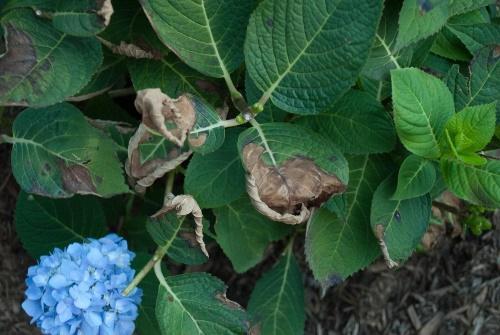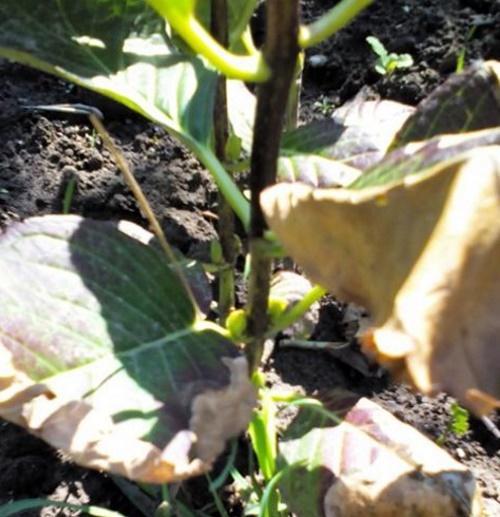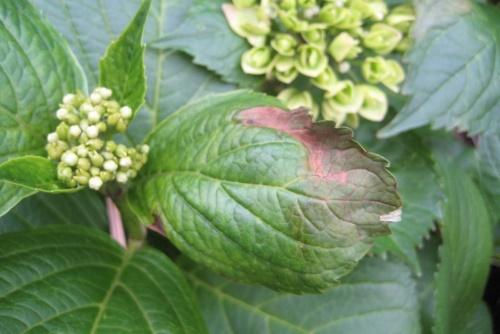Why hydrangea leaves dry: causes and remedies
 Lush, bright and simply huge hydrangea inflorescences serve as a spectacular decoration of the garden. In general, this is a fairly unpretentious plant that, with proper care, will not cause problems. However, troubles happen with hydrangea, especially for novice gardeners. Lack of awareness of what a garden culture prefers can lead to the fact that it begins to be capricious. And one of the most common problems when growing perennials is foliage drying out. There may be several reasons why hydrangea leaves dry, from improper planting to errors in caring for a shrub. Let's take a closer look at them and find out how to help the plant in each specific case.
Lush, bright and simply huge hydrangea inflorescences serve as a spectacular decoration of the garden. In general, this is a fairly unpretentious plant that, with proper care, will not cause problems. However, troubles happen with hydrangea, especially for novice gardeners. Lack of awareness of what a garden culture prefers can lead to the fact that it begins to be capricious. And one of the most common problems when growing perennials is foliage drying out. There may be several reasons why hydrangea leaves dry, from improper planting to errors in caring for a shrub. Let's take a closer look at them and find out how to help the plant in each specific case.
Why do hydrangea leaves dry after planting?

The recovery period can last up to 2 months. To help the hydrangea take root, it is recommended to process it every 10 days. growth stimulant, for example, Zircon.
Unsuitable planting location for hydrangeas as a cause of foliage drying out
 Hydrangea needs a cozy, light area with acidic soil. Only there it will actively develop and bloom profusely. Conversely, the leaves on the bush begin to dry out or become covered with dry spots in the case of:
Hydrangea needs a cozy, light area with acidic soil. Only there it will actively develop and bloom profusely. Conversely, the leaves on the bush begin to dry out or become covered with dry spots in the case of:
- Excess lighting. Hydrangeas get burns from direct rays in the sun. It is better to give her a place in the shade of trees with an openwork crown.
- Draft. Heat-loving hydrangea is afraid of the wind, and the bush can disappear completely. To prevent this, it should be transplanted by choosing a protected, cozy place, for example, under the wall of a house.
- Low acidity of the soil. Alkaline soil is not suitable for hydrangea. The shrub must either be transplanted or fertilized regularly to acidify the soil. The most affordable option is to add a couple of drops of lemon juice for every liter of water when you water your hydrangea.
The juice can be replaced with vinegar essence (0.5 tsp for 5 liters of water).
What mistakes in care lead to drying of leaves on hydrangeas?
 If the planting site is chosen correctly and the soil is acidic enough, foliage can dry out as a result of errors in care, namely:
If the planting site is chosen correctly and the soil is acidic enough, foliage can dry out as a result of errors in care, namely:
- Insufficient watering. The plant loves water, so you need to make sure that the ground under the bush does not dry out, especially in summer. In this case, the water for irrigation must be soft, settled and in no case cold.
- Scanty food. During the period when hydrangea forms buds and blooms, it needs additional feeding. The mineral complex must be added at least 3 times a month.
If the hydrangea is growing in a greenhouse, you should often ventilate it and spray the bush to maintain optimal humidity.
Diseases that cause hydrangea leaves to dry out
 Sometimes the shrub dries up even with proper care. In this case, it is possible that diseases manifest themselves in this way, namely:
Sometimes the shrub dries up even with proper care. In this case, it is possible that diseases manifest themselves in this way, namely:
- Chlorosis. The disease begins with yellowing of the leaf plate, while the veins themselves remain green. Chlorosis, if left untreated, causes foliage to dry out, curl and shedding. You can help hydrangeas by spraying the bush with preparations with a high iron content.
- Septoria. Brown spots grow over time, leading to drying and death of foliage. Treatment needs radical. The affected branches should be cut, and the remaining ones should be treated with a fungicide.